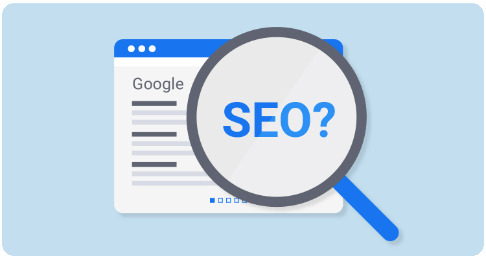#Ultimate SEO Checklist
Text
What Are the Latest SEO Trends to Follow in 2023?
The SEO landscape is constantly evolving. What worked yesterday may not work today, and what works today may not work tomorrow. That’s why it’s important to stay on top of the latest SEO trends and keep your finger on the pulse of the industry. Before you can do that, however, you need to understand what is SEO and what SEO trends are actually worth your time and attention as well as how an SEO strategy can help.
#developers & startups#business#technology#writers#science#ultimate seo checklist#digital marketing services in usa#best seo services in usa#local seo services
2 notes
·
View notes
Text

Image Optimization
Among all the other on-page SEO elements, your body content is simply the tip of the iceberg. Robust SEO methods include a strategy for creating consistent, helpful, and shareable content in a variety of media. This increases the number of chances for your content to rank (e.g., blog post, YouTube video, SlideShare, podcast, infographic, news, etc.). It also takes into account your audience’s various learning styles. Visit: https://blogs.digikoredigital.com/index.php/2022/12/22/the-ultimate-seo-checklist-key-steps-to-google-success/
#Best SEO Company In Pune#Digital Marketing#Digital Marketing Strategies#Ultimate SEO Checklist#digital marketing#social media marketing
0 notes
Text
Understanding the Importance of Mobile SEO in 2024
Introduction
Welcome to the era of digital technology, when smartphones have replaced our trusted companions, helping us to effortlessly navigate the intricacies of the internet with a simple swipe or tap. Businesses looking to succeed in the digital sphere in 2024 must grasp the significance of mobile SEO in this dynamic environment where mobile devices are the norm.
Mobile optimization: what is it?
Making sure a website is optimized to offer a remarkable user experience on mobile devices—like smartphones and tablets—is known as mobile optimization. In order to effectively adjust to different screen sizes and resolutions, websites must be optimized in terms of design, content, and performance. This will increase user happiness and engagement.
The importance of Mobile Optimization
In today's fast-paced world, where customers expect rapid access to information while on the go, mobile optimization is a need for companies that want to remain relevant and competitive. This is the reason why:
Improved User Experience:
Users can browse a mobile website with ease thanks to faster load times, simple navigation, and content that is suited for smaller screens. This increases user engagement and decreases bounce rates.
Improved Search ranks:
Mobile optimization is essential to achieving higher search ranks and visibility in mobile search results due to Google's mobile-first indexing strategy, which leverages the mobile version of a website for indexing and ranking.
Increased Reach:
With mobile usage continuing to rise worldwide, making your website mobile-friendly gives you access to new markets and opportunities for interaction with a larger audience. You can also take advantage of the sizable number of mobile users who are looking for information, products, and services.
Competitive Edge:
Companies that place a high priority on mobile optimization obtain an advantage over their rivals in a crowded digital market by providing a better mobile experience that draws in and keeps customers, which eventually increases conversions and sales.
Changing to Meet Customer Expectations:
As mobile devices become the go-to option for internet access, companies need to adjust their marketing tactics to suit the changing preferences of their target audience. This means putting a strong emphasis on mobile optimisation to satisfy tech-savvy customers.
Faster Load Times:
Improving the user experience, lowering bounce rates, and increasing conversion rates are all achieved by optimizing website performance for mobile devices by minimizing page load times and optimizing pictures and multimedia content.
Mobile-Friendly Design:
Using a responsive web design strategy guarantees that your website adapts to various screen sizes and resolutions with ease, providing a unified and aesthetically pleasing experience on all devices. This is crucial for keeping users on your site and promoting return visits.
Streamlined Navigation:
Make it easier for consumers to locate what they're looking for and take desired actions, like making a purchase or contacting your organization, by integrating intuitive menus, obvious calls-to-action, and easily accessible information on mobile devices.
Optimized Image:
Content that is optimized for mobile devices should be written with shorter paragraphs, bullet points, and distinct headings to increase readability and user engagement on smaller screens. This will captivate readers and entice them to continue exploring.
Use Accelerated Mobile Pages (AMP):
AMP is a framework that can be used to create mobile web pages that load extremely quickly. By using AMP, you can deliver content that loads instantly, giving users a seamless browsing experience and possibly even improving your site's visibility and search engine rankings.
Track and Evaluate Performance:
Using tools like Google Analytics, track and evaluate important performance metrics on a regular basis—such as mobile traffic, bounce rates, and conversion rates—to pinpoint areas for development and tailor your mobile strategy for optimal effect and outcomes.
Conclusion
Given how much mobile devices will continue to change the digital landscape and affect consumer behaviour in 2024, the significance of mobile optimization cannot be overemphasized.
In a world that is becoming more and more mobile-centric, businesses can seize new opportunities for growth, exposure, and success by giving mobile SEO top priority and putting into practice efficient techniques to improve the mobile user experience.
So, please don't hesitate any longer; you can use the opportunity to leverage mobile optimisation to grow your company in 2024 and beyond!
Read More of Our Blogs
#ultimate guide: mobile optimization for SEO#mobile optimization for beginner’s#mobile optimization checklist#mobile optimization tips#Mobile optimization#Mobile SEO optimization#mobile optimization for SEO
0 notes
Text
Discover the ultimate guide for mastering SEO in 2023 with our comprehensive SEO Checklist. Navigate the digital landscape and unlock strategies for enhanced online visibility and success. Stay ahead of the curve and optimize your website for peak performance.
0 notes
Text
Kickstart Your Fitness On How To Start a fitness Apparel Line: A Comprehensive Guide to Success

Launching a start-up fashion apparel business in the female fitness apparel niche is indeed a very engaging experience as it combines love for fitness clothing, fashion trends and, sports and business. The ultimate checklist to follow will help you to start the process of creating a profitable line of fitness wear.
Understanding of fitness clothing line

There are three main areas: choosing the best fabric for high performance, fabric weight, focusing on the stability, and adding in such things as the presence of moisture and breathing capability. Similarly everyday the athletic clothing line, the fitness clothing industry also top priority in terms of brand creation, market analysis, and marketing approach focused to the right demographic with keen interest in fitness and having a healthy lifestyle.
1. RESEARCH PLANNING

Understand the Market: Other recommendations include the following: Analyzing trends, target demographic, and players within the industry.
Choose Your Niche: To succeed in this competitive market, it is advisable to choose a niche, whether it is athleisure, performance wear, or sustainable materials.
Business Plan: Complete and submit the following plan as part of your proposal: plan: vision, goals, cost, and promotional plan.
2. PRODUCT DEVELOPMENT

Design Your Apparel: Other aspects of designs that needs to be taken into considerations include The purpose of the designs is to be unique that will appeal to the target audience.
Material Selection: Select materials of the highest quality that can resist wear and tear that often comes with many forms of physical training.
Prototype and Testing: Prototyping is the next step where one has to design and develop the prototypes of the concept and it is crucial to ensure that the gadgets created are functional, comfortable to wear and fashionable.
3. BRANDING AND IDENTITY

Brand Name and Logo: Namely, create a strong brand name and easily recognizable logo that would comply with the overall image of your brand.
Brand Story: Although a brand story does not necessarily identify neatly and distinctly with the audience, it is a building block by which you can create an emotional appeal as a way of communicating with the audience.
Brand Guidelines: It is imperative that what your brand represents on the Internet should resemble your offline brand image.
4. MANUFACTURING

Find a Manufacturer: Still using the example, try to research on the best manufacturer of the product that you would like to order within your set standard and financial capacity.
Sourcing Materials: Make sure that supplies of the chosen type of materials are constant.
Production Process: Supervise the manufacturing, or other processes, in order to ensure quality is not compromised.
5. LEGALITIES AND LICENSING

Business Structure: Decide on the right form of business to take (for example, LLC, sole proprietorship and others).
Licenses and Permits: The other important requirement includes; Securing the necessary business licenses and permits.
Trademark and Copyrights: Remember to safeguard your brand legally through the trademarks for the name, logo or any designs.
6. SETTING UP AN ONLINE PRESENCE

E-commerce Platform: Employ a friendly and easy to use e-business software to conduct your business with your customers.
Website Design: The need to create a website that is both attractive and easy to use cannot be overemphasized.
SEO and Content Marketing: Featured snippets must be implemented, and consistent development of content laced with SEO practices to accrue and maintain a loyal customer base should be the major goals.
7. MARKETING STRATEGY AND PROMOTION

Social Media Marketing: In this case, it is crucial to utilize social media platforms as a way of putting your brand out for people to see.
Influencer Collaborations: People follow the recommendations of their favorite personalities, especially in the online space, so use fitness influencers to advertise a new meal plan.
Email Marketing: In reference to the goal of increasing consumers’ purchases and maintaining their loyalty, it is vital to actively use e-mail campaigns to keep the target audience informed and involved.
8. LAUNCH AND GROWTH

Soft Launch: First, launch the product, specifically in a geographical location that will allow the research team to receive feedback before rebranding.
Official Launch: When your product is ready, ensure that it has a glamorous unveiling coupled with the promotions and campaigns.
Customer Feedback: Customers’ opinions can be heard through surveys, interviews or simply having them fill out a short questionnaire.
How Can You Choose the Suitable Fitness Clothing Manufacturer?
Choosing the right for fitness apparel brands and sports and fitness clothing brand by manufacturer involves several critical steps:
Research and Referrals

Always start your search online, and if you’re already connected to people in the fashion industry, ask for recommendations.
Evaluate Experience

In the case of sweaty gym and workout clothes made, the best manufacturers are those with specialization in manufacturing fitness apparel business apparels.
Check Quality Standards

Provide feedback on the quality control mechanisms used by the prospective suppliers and make sample demands.
Communication and Responsiveness

Guarantee that they are articulate and on the same page in terms of time.
Production Capacity and Flexibility

Check if they can fulfil your orders now and their ability to scale up for the future.
Cost and MOQs

You ought to compare costs and minimum order quantities (MOQs) that you will be willing to pay.
Ethical Practices

This means clothing manufacturers ensure that they adhere to the universally accepted ethical manufacturing standards.
FAQs

What is the first step in starting a fitness apparel line?
Ever before buying a product or designing one, a marketer needs to acquire some information in the niche market he intends to operate in.
How do I choose a niche for my fitness apparel line?
Keep it niche such as a sector, a category fitness clothing, or a material such casual clothing such as leisure-wear, sportswear, gym wear or eco-friendly material respectively.
What should be included in a business plan?
Describe your dream from day one, what you want to accomplish, how much money you will spend, solid business plan, how you will sell your product, and your business strategy and plan ROI.
How do I find a reliable manufacturer?
Research manufacturers, request samples, and assess their quality control, capacity, and ethical practices.
What legal requirements should I consider?
Choose a business model or structure to operate legally, Most legal business loans and structures require licenses and permits, and register a business name to safeguard your own business license and brand legally.
How can I build my brand identity?
It is also essential gym clothing brand to have a catchy brand name and logo that is geared towards attracting the intended audience to workout a fitness clothing line, as well as supporting them through a narrative.
What are the key elements of an online presence?
Establish an e-commerce site, create the storefront that consumers will want to frequent, and optimize the corporate website for search engine rankings.
How do I effectively market my fitness apparel line?
Get to market your own your own fitness clothing line, brand and products using social media marketing, brand association with influencers, e-mail marketing, and content quality.
Best advice to start a fitness clothing business
Allocation and the execution of goals and objectives, budget, sales and marketing strategies or the overall business plan is crucial. Brand your campaigns and target your audience through the proper use of social media, well-chosen influencers and online marketing. Marketing has to be properly developed, the web site has to be built in a way that it is easy to navigate, and contain optimized links that will bring buyers to the site. Remain open to change to stay in tune with emerging trends in the industry and target market, and with the opinion of the target customer to design better products and perform better business functions. Some of the tips involve; networking with professional industry players and looking for a mentor in the matter.
Conclusion
To sum up, it is crucial to outline the precise step-by-step plan when launching a fitness apparel line, from the accounting of the saturation in market and choice of the niche to creating the recognizable brand image. Hence, to create a niche fitness brand identity and carve out a space for itself within the cut-throat competition for quality fitness apparel and apparels, one must focus on quality fabrics, unique designs, and targeting the right consumer. And do not forget about using digital tools, addressing the audience through social networks, and being ready to adjust tactics according to tendencies and consumers’ responses. Fitness business or a new fitness clothing line or brand may sound a little blur, but if you are fully committed and employ adequate strategies, you can make a lot of money out of it such as workout clothes, gym apparel line and other new fitness clothing line and activewear manufacturers.
This would mean that undertaking this journey is more of a learning process and an experimentation process. It is crucial to remain connected with other professionals in the industry to be able to find support in the shape of a mentor, as well as always monitor the market situation to be able to manage on threats or even turn them into opportunities to sell workout clothes. To sustain the appreciation of the value these apparels have in the fitness industry or your own fitness clothing line or business and ensuring customer loyalty, one must strive to embrace a winning strategy that complies with the customer-oriented approach into your own fitness brand or fitness clothing line business.
#blog#clothing#fitnessapparel#business#fashion#clothing business idea#how to start a fitness apparel line
2 notes
·
View notes
Text
"Unlocking SEO Success: The Ultimate Checklist for Higher Rankings!"
🌟 Boost your website's search engine rankings with our step-by-step SEO Checklist! 📊✅ Whether you're a beginner or seasoned pro, make sure you're optimizing every aspect for maximum visibility and success. 🔍 Ready to take your SEO game to the next level? Boost your SEO game today!
💪 🚀Let's get started! 🚀💡



#SEOChecklist#DigitalMarketing#SEOtips#SEO#seochecklist#seo#seotips#digitalmarketing#seoservices#onpageseo#searchengineoptimization#seostrategy#seotipsandtricks#technicalseo#marketingtips#seoservicesindia#seotools#google#organictraffic#seomarketing#seoexpert#content#offpageseo#localseo#marketing#seoranking#seoexperts#digitalmarketingservices#seoaudit#seomarketingstrategy
2 notes
·
View notes
Text
The Ultimate Guide to Starting A Podcast [Checklist]
Part 1 l Part 2 l Part 3 l Part 4 l Part 5 l Part 6 l Part 7 l Part 8 l Part 9 l Part 10
The eleventh article Sydney gave me is an actionable list. The writer- Lestraundra Alfred- said she started a podcast in ten days by following it.
Determine your niche.
I know. Some of you who have been reading all the posts in this series are probably groaning right now at the repetition. I admit, as I was reading through them I was starting to almost be able to say the words in my head before I read them, like how I can quote movies I've seen a bunch of times.
But this is important- I mentioned before that it's better to be in the top ten of a smaller niche than top twenty of a broader one. But it's more than that- sites like spotify and apple podcasts use the niches you provide to categorize your show, and that categorization brings your podcast to those who are actually looking for similar things.
The article lists popular categories- comedy, news, TV shows and movies, and sports among them- so you can find inspiration in them and narrow your focus.
2. Identify your ideal listener
The article talks about going super specific with your listener avatar- age, job, education, income, other interests, hobbies, and where they live. This will let you think about what your perfect listener will think about your ideas and help you refine them.
3. Name your podcast and make a launch date
For the name, make sure you look it up a few times with variations so you don't accidentally use the same name as some other brand.
For the launch date, make sure to give yourself some time to do your preparations and recording, but not too much time that it's just procrastinating.
4. Format and schedule
There's a variety of formats, each with their own pros and cons. Interviews, co-hosts, and solo shows are just three.
The most common frequencies of publishing according to this article are weekly, bi-weekly (which I assume in this case means once every two weeks, not twice a week), and monthly. But the article also says consistency is key- don't do weekly for three weeks, and then not upload for two months.
5. Podcast host
Again, this is necessary because of internet jargon. An RSS feed is needed to upload to the actual directories where people can listen. The article lists a few via links which- as you all can probably guess by now- I won't add because I want to preserve their commissions. Plus, you'll probably want to read the article in its entirety to get all the details because I'm glossing over them to keep the big picture in sight.
6. Artwork
This article is linked, and it has a more in-depth guide on how to make artwork with examples. But this article recommends just browsing through your podcast listening site of choice and just looking at artwork, thinking about how yours will fit in.
7. Equipment
This article goes into the topic more in-depth, with specifics about what they personally recommend, but really a microphone, a computer, headphones, and recording and editing software are all you really need.
8. Create a trailer
Ah, finally, I can hear some of you think. A new step.
A trailer gives a new listener a chance to find out what your podcast is all about. So be sure to make it engaging and interesting.
9. Submit to directories
You'll be able to do this through your hosting site.
10. Start with three episodes
Another new step, yay! Not only does this give more content for listeners to really see if your podcast is a good fit for them, but it'll let your podcast get listens and other statistics more quickly. That means that the directory will read that and go 'oh! People really like this show. Let me move it to the front so more people can like it.' Your trailer shouldn't count in those three episodes.
11. Show notes
Yet another new step! Hooray! Show notes are basically really short blog posts that are under each episode and tailored to that specific episode. They're a good place for SEO (search engine optimization), and a way for avid listeners to follow the podcast on different sites, like your social media.
12. Get social media handles
Speaking of social media, you'll want these before you launch. This way you have them and can actually use them to promote yourself and the podcast. Domain names are included in this step.
13. Upload and schedule your three episodes
Once everything is edited and done, it's time to stick to your launch date you chose in step three and schedule through your hosting site to launch.
14. Market and celebrate
Now it's time to get the word out. You've worked so hard on this project, congratulations! An aside from me is to actually take time to celebrate. Don't rush right into more work, take the time to soak in your accomplishment, because it is an accomplishment.
4 notes
·
View notes
Text
The Ultimate SEO Checklist for Online Coaches in 2024
As an online coach in 2024, leveraging SEO is paramount to attracting more clients and establishing your authority in a competitive digital landscape. SEO, or Search Engine Optimization, is a crucial tool for improving your online visibility and driving organic traffic to your coaching website. Below is the ultimate SEO checklist tailored for online coaches looking to optimize their digital presence effectively.

1. Comprehensive Keyword Research
Begin with thorough keyword research to identify terms your potential clients are searching for. Focus on long-tail keywords related to your coaching niche, services, and common questions your audience might have. Tools like Google Keyword Planner, Ahrefs, or SEMrush can provide valuable insights into search volume and competition levels.
2. Optimized Website Structure
Ensure your website has a clear, logical structure that’s easy for both users and search engines to navigate. Use a straightforward menu with clearly labeled sections and a sitemap to help search engines crawl your site more effectively.
3. High-Quality, Relevant Content
Content is king in the world of SEO. Produce high-quality, informative blog posts, articles, and resources that address the needs and questions of your target audience. Regularly updating your site with fresh content can improve your search engine rankings and keep visitors coming back.
4. On-Page SEO Optimization
For every piece of content you create, ensure you're implementing on-page SEO best practices. This includes using your chosen keywords in titles, headers, meta descriptions, and throughout the content in a natural, reader-friendly way. Also, optimize images by compressing them for faster loading times and using descriptive file names and alt text.
5. Mobile Responsiveness
With the majority of internet browsing now done on mobile devices, your website must be mobile-friendly. Google uses mobile-first indexing, so a responsive design that adjusts to various screen sizes is essential for SEO.
6. Page Load Speed
A slow website can significantly increase your bounce rate and negatively impact your SEO. Use tools like Google PageSpeed Insights to check your site’s speed and follow the recommendations to improve load times, such as compressing images and minimizing the use of large files.
7. Secure Website with HTTPS
Security is a top priority for Google and your potential clients. Ensure your website uses HTTPS encryption to protect user data and improve your site’s trustworthiness and search ranking.
8. Backlink Strategy
High-quality backlinks from reputable websites in your niche can greatly enhance your SEO. Focus on building relationships with other coaches, industry websites, and influencers to earn links that boost your site’s authority.
9. Local SEO for Local Coaches
If you offer coaching services in a specific area, local SEO can be incredibly beneficial. Claim your Google My Business listing, include local keywords in your content, and ensure your business is listed accurately on local directories.
10. Analyzing and Refining Your SEO Strategy
SEO is not a set-it-and-forget-it task. Use tools like Google Analytics and Google Search Console to track your website's performance, understand how visitors are finding you, and identify areas for improvement. Regularly reviewing and updating your SEO strategy based on performance data is key to staying ahead in search rankings.
11. Engaging Social Media Presence
While social media doesn’t directly influence SEO rankings, it can drive traffic to your website and increase your online visibility. Share your content on social media platforms where your potential clients are active, and engage with your audience to build your brand.
12. User Experience (UX)
Google values websites that provide a good user experience. This includes easy navigation, fast load times, and engaging, valuable content. Ensure your website is designed with the user in mind to not only satisfy search engines but convert visitors into clients.
This SEO checklist for online coaches in 2024 highlights the importance of a comprehensive, multi-faceted approach to optimizing your online presence. By following these steps, you can improve your visibility in search engine results, attract more potential clients, and establish yourself as a leading authority in your coaching niche.
4 notes
·
View notes
Text

Website Migration SEO Checklist: by SEO Jargons
Discover the ultimate step-by-step guide to migrating your website without sacrificing SEO rankings. Learn how to seamlessly transition your site while preserving organic visibility. Don't miss out on this valuable resource for successful website migration. Check out the blog now!
2 notes
·
View notes
Text
Digital Marketing Services
Find out how Foreignerds Inc. can help enhance your business with online visibility and better reachability with digital marketing services.
#developers & startups#business#technology#writers#ultimate seo checklist#digital marketing services#local seo services#best seo services in usa
0 notes
Link
1 note
·
View note
Text
0 notes
Text
The Ultimate SEO Checklist 2023: Achieve Search Excellence

In the rapidly evolving digital landscape of 2023, the Ultimate SEO Checklist 2023 continues to play a pivotal role in determining the online success of businesses and individuals alike. With search engines becoming smarter and user expectations soaring, mastering the art of SEO has never been more crucial.
Technical SEO: Laying the Foundation
Understanding and Optimizing Website Speed
In the quest for search excellence, your website's loading speed is paramount, especially when it comes to the Ultimate SEO Checklist 2023. Search engines and users alike highly value websites that offer a seamless browsing experience. A sluggish website can lead to higher bounce rates and decreased rankings. Regularly monitor your website's performance using tools like Google PageSpeed Insights to identify areas for improvement.
Mobile-Friendly Optimization
As mobile devices continue to dominate online traffic, a mobile-friendly website is no longer optional—it's a necessity. Google's mobile-first indexing prioritizes mobile versions of websites for ranking purposes.
Crawlability and Indexing
For your content to appear in search results, search engines must be able to crawl and index your website effectively. Utilize a sitemap to provide clear navigation paths for search engine bots. Employ robot.txt files to guide search engines on which parts of your site to crawl or avoid. Regularly check your website's index status on Google Search Console to identify potential issues and rectify them promptly.
Content Creation: Crafting Compelling and Relevant Material
Keyword Research and Integration
Keywords are the cornerstone of SEO. Thorough keyword research helps you understand what your target audience is searching for and enables you to create content that aligns with their needs. Utilize tools like SEMrush, Ahrefs, or Google Keyword Planner to identify high-traffic and relevant keywords.
High-Quality and Engaging Content
Gone are the days of keyword stuffing and thin content. In 2023, search engines prioritize high-quality, informative, and engaging content. Create content that answers users' queries comprehensively and offers unique insights.
Optimized Visual Content
Visual content, including images, videos, and infographics, enhances user engagement and enriches the overall browsing experience. However, to optimize visual content for SEO, ensure proper file compression to prevent slow loading times.
Off-Page SEO: Building Authority and Relevance
Link Building and Backlink Strategy
Earning high-quality backlinks from authoritative websites remains a powerful SEO tactic. Focus on building genuine relationships within your industry and create shareable content that naturally attracts backlinks.
Social Media Engagement and Brand Mentions
Social media signals and brand mentions are indirect influencers of SEO. Active engagement on social media platforms not only boosts brand visibility but can also lead to increased traffic to your website.
User Experience and Dwell Time
Search engines take user experience into account when ranking websites. Dwell time—the duration users spend on your site—indicates the quality and relevance of your content. Enhance user experience by optimizing site navigation, improving page load times, and organizing content logically.
Conclusion
the journey towards achieving search excellence in 2023 can be greatly facilitated by adhering to the principles outlined in the Ultimate SEO Checklist 2023. By meticulously implementing the strategies and best practices detailed within the checklist, website owners can position themselves for higher rankings, improved user experiences, and greater online visibility. Embracing the insights and recommendations offered by the Ultimate SEO Checklist 2023 is a proactive step towards staying ahead in the dynamic landscape of search engine optimization.
0 notes
Text
🚀 Boost your startup's visibility with my latest blog: "The Ultimate SEO Checklist for Startups"! Perfect for entrepreneurs ready to enhance their online presence.
0 notes
Text
The Ultimate Online Business Checklist for Aspiring Entrepreneurs
Starting an online business can be one of the most rewarding ventures you embark on, but it requires a clear plan and strategic approach. With the right preparation, you can turn your ideas into a profitable online business. Below is an online business checklist to guide you step by step through the process, ensuring you cover all necessary aspects for a successful launch.
1. Research and Choose Your Business Idea
The foundation of any successful online business begins with a solid idea. You need to select a niche that excites you and addresses a real need in the market.
Identify your interests and skills: What are you passionate about, and what are you good at?
Market research: Use tools like Google Trends, competitor analysis, and consumer surveys to identify gaps in the market.
Validate your idea: Before diving in, validate your business idea by gathering feedback from potential customers or running a pilot project.
Choosing the right idea is crucial as it forms the backbone of your online business.
2. Create a Business Plan
A clear business plan will help outline your goals, target audience, and strategies. Even though online businesses often start small, having a roadmap is essential.
Business model: Decide how your business will generate revenue (e.g., product sales, subscription services, or affiliate marketing).
Target audience: Define who your customers are, including their demographics and purchasing behaviors.
Revenue projections: Estimate how much you expect to make within the first few months or years.
Marketing strategy: How will you promote your business? Consider SEO, social media, and paid advertising.
This business plan will guide you through key decisions and provide a solid framework for growth.
3. Choose a Business Name and Register Your Domain
Your business name should be memorable and relevant to your niche. After choosing a name, ensure the domain is available for your website.
Domain name check: Use services like Namecheap or GoDaddy to see if your preferred domain is available.
Secure social media handles: Make sure your business name is also available on social media platforms.
Register your domain: Once chosen, secure your domain to prevent others from taking it.
Your domain name is often the first thing customers will see, so make it simple and recognizable.
4. Build Your Website
Your website is the face of your online business. Whether you’re selling products, offering services, or blogging, an intuitive and appealing website is essential.
Choose a platform: Platforms like Shopify, WordPress, and Wix offer user-friendly solutions for building your site.
Design your site: Ensure your website is responsive (mobile-friendly), easy to navigate, and aesthetically pleasing.
Set up key pages: Include important pages such as Home, About Us, Products/Services, Contact, and FAQs.
SEO optimization: Implement keywords, meta descriptions, and alt tags to help your website rank higher in search engines.
A well-designed website enhances customer experience and makes your business look professional.
5. Set Up Payment Processing
To make sales, you need a secure and user-friendly payment system. This allows customers to purchase from you with ease.
Choose a payment gateway: Popular options include PayPal, Stripe, and Square.
Set up a business bank account: Keep your personal and business finances separate by opening a dedicated account.
Integrate payment on your site: Ensure your payment options are visible and simple for customers to use.
Having a seamless checkout process is critical to reducing cart abandonment and ensuring customer satisfaction.
6. Obtain Necessary Permits and Licenses
Even for online businesses, there are legal and tax considerations. Make sure you’re compliant with all regulations before you start selling.
Business licenses: Depending on where you live, you may need specific licenses to operate legally.
Taxes: Understand your obligations for sales tax, income tax, or other applicable fees.
Terms and privacy policies: Make sure your website includes terms of service and privacy policies, especially if you’re collecting customer data.
Legal compliance protects you from future issues and builds trust with your customers.
7. Set Up Marketing Tools and Analytics
Marketing is key to driving traffic and sales. From social media to email campaigns, having the right marketing tools in place will boost your business visibility.
Email marketing: Use platforms like Mailchimp or ConvertKit to start building your mailing list and sending campaigns.
Social media marketing: Create business profiles on platforms like Instagram, Facebook, and LinkedIn.
SEO tools: Use tools like Google Analytics, SEMrush, and Moz to track your website performance and optimize for better search rankings.
A strong marketing strategy ensures that you can reach and engage your target audience effectively.
8. Set Up Customer Support Systems
Good customer service can set you apart from competitors and lead to higher customer retention. Ensure you have support systems in place before launching.
Live chat or helpdesk software: Tools like Zendesk or LiveChat can provide immediate assistance to visitors.
FAQ page: Anticipate common customer questions and answer them in a dedicated section of your website.
Email and social media support: Offer support through multiple channels to accommodate your customers' preferences.
Efficient customer support boosts satisfaction and helps build long-term relationships with your customers.
9. Launch Your Online Business
After all the preparations, it’s time to launch. Start with a soft launch to test all aspects of your business and gather feedback from initial users.
Test your website: Make sure all links, payment processes, and pages work properly.
Announce your launch: Use your social media, email list, and other marketing channels to promote your launch.
Track performance: Use Google Analytics to monitor traffic, sales, and customer behavior during the first few days and weeks.
A well-planned launch will generate excitement and help you hit the ground running.
10. Evaluate and Optimize
Once your business is live, the real work begins. Continuously track, measure, and optimize your processes to grow your online business.
Analyze data: Regularly check your analytics to see what’s working and what isn’t.
Adjust marketing strategies: Tweak your ads, content, and social media strategies to better reach your audience.
Expand your offerings: Based on customer feedback, consider adding new products, services, or features.
The online business landscape is ever-changing, so staying flexible and open to growth is key to long-term success.
Conclusion
Starting an online business can be a life-changing endeavor, offering freedom, flexibility, and unlimited earning potential. By following this online business checklist, you’ll be well-prepared to navigate the complexities of launching and growing your business. Remember, success doesn’t happen overnight—it requires dedication, adaptability, and consistent effort. But with the right strategy and tools in place, you can build a thriving online business that stands the test of time.
0 notes
Text
Optimize your website's performance with Technical SEO! From faster loading times to mobile-friendly designs, we ensure your site is ready to rank higher. 🔧🚀
#TechnicalSEO #WebsiteOptimization #SEOExperts #RankHigher
0 notes